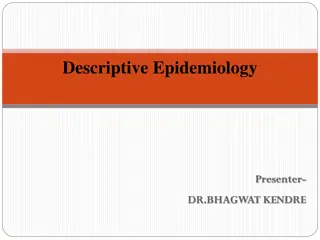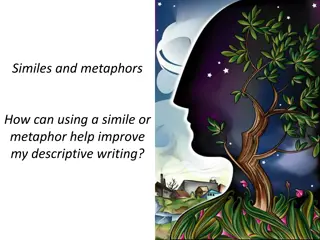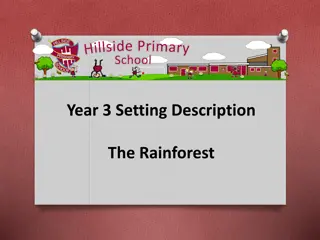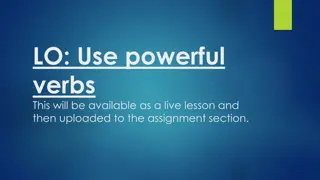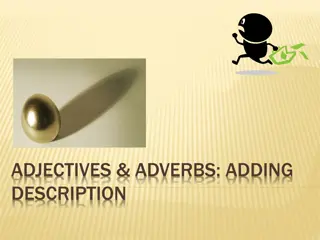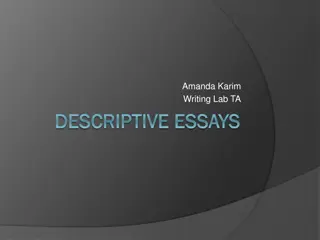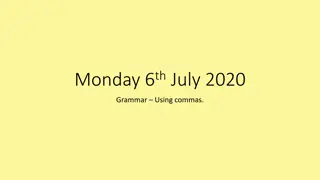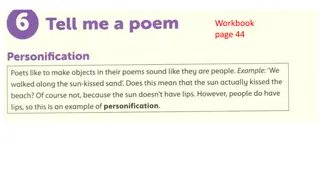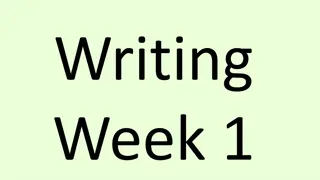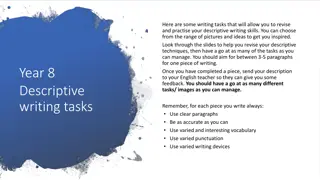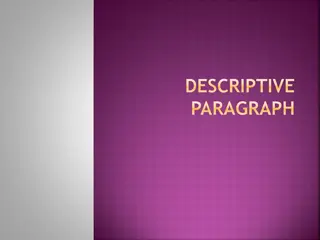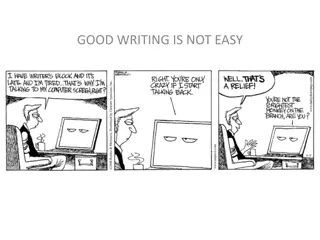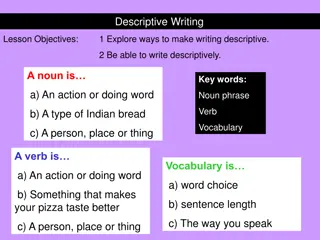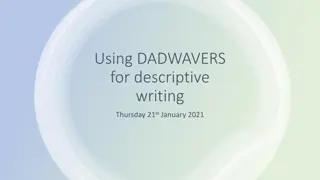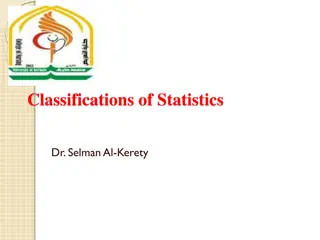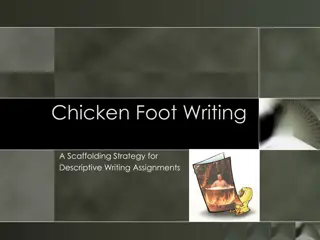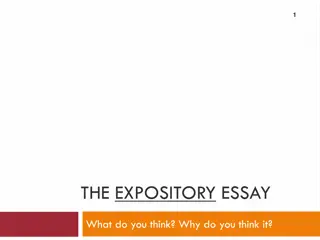Mastering Descriptive Writing: Creating Vivid Images with Words
Utilizing descriptive paragraphs helps writers paint a vivid picture for readers by engaging all senses through specific language and adjectives. This guide explores the components of a descriptive paragraph, from the topic sentence to supporting details and a concluding statement. Learn how to use descriptive adjectives effectively to enhance your writing and captivate your audience.
Download Presentation

Please find below an Image/Link to download the presentation.
The content on the website is provided AS IS for your information and personal use only. It may not be sold, licensed, or shared on other websites without obtaining consent from the author. Download presentation by click this link. If you encounter any issues during the download, it is possible that the publisher has removed the file from their server.
E N D
Presentation Transcript
DESCRIPTIVE PARAGRAPHS
IN A DESCRIPTIVE PARAGRAPH, THE WRITER USES WORDS TO CREATE AN IMAGE The writer helps the reader to see, touch, feel, smell, or taste the topic The topic can be a person, place or an object.
TOPIC SENTENCE Introduces the topic that the writer will describe. May include the writer's feeling, attitude, or opinion towards the item/topic.
FOR EXAMPLE: I own a car that has special meaning for me because it belonged to my grandfather.
SUPPORTING SENTENCES Background information about the item. When he was a young man, he saved money to buy a car that he could use on trips around the country. Details describing how the item looks, smells, feels, sounds or tastes. It was blue and white with silver trim. The car had a powerful horn that made people jump. How the writer feel about the item. I am very happy because the car still has the original motor
CONCLUDING SENTENCE Restating the idea in different words. Someday I will use it to travel to all the states and cities that my grandfather visited when he was a young man.
USING SPECIFIC LANGUAGE Using specific language in descriptive writing gives the reader a clear image, and create an engaging sensory details about the topic
ADJECTIVES IN DESCRIPTIVE PARAGRAPHS To be an effective writer or speaker, it is necessary to build sentences that will catch a person's attention regardless of how dull the topic may seem. One way to enhance the appeal of a topic is by including a variety of adjectives. Adjectives are words that describe nouns or pronouns by describing specific qualities about them.
Descriptive adjectives Words that describe qualities of a noun or pronoun, such as smell, taste, texture, appearance, and shape. A large, metal desk An antique violin Use A, An, or The before adjectives that proceed singular nouns
NOUNS CAN BE USED AS ADJECTIVES A rose garden A pocket knife Adjectives and nouns functioning as adjectives are always singular even when describing a plural noun. Two Kitchen table/s Two lovely bracelet/s.
BOTH ADJECTIVES AND NOUNS CAN BE USED AFTER BE My father expression is wise and serious. I am a teacher
ADJECTIVES COME AFTER BE TO DESCRIBE Condition He is ready Physical characteristic or personality I am strong. Gabriela is gracious. Age My daughter is six
USE BE + NOUN OR A NOUN PHRASE TO Identify or define something This is a map. Describing occupations He is a writer. Describing relationships We are classmates.
NO CONTRACTIONS OF VERB BE SHALL BE USED IN ACADEMIC WRITING I m healthy I am healthy She is not healthy
BRAINSTORMING ACTIVITY In this class, You will write about a special possession that you have. Make a bubble diagram to brainstorm some ideas, and fill it with descriptive sensory words that describe people, places, or feelings associated with the possession.
Places Things People My Special Possession Sensory details Time Feelings









